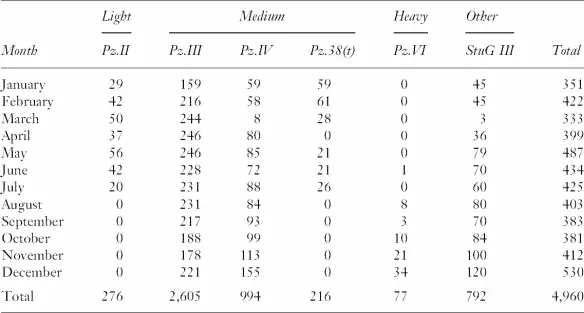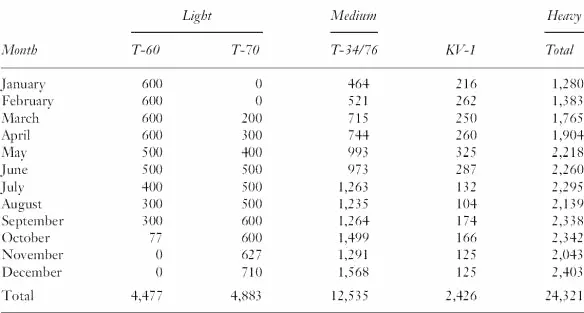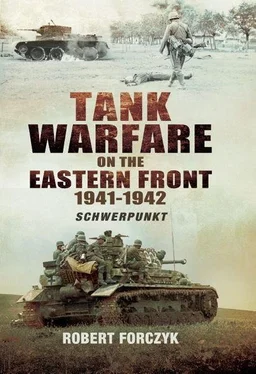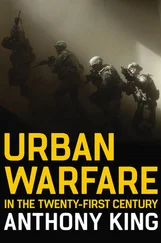■ 6th Guards, 91st, 114th Tank Brigades [128 tanks total]
○ 65th, 90th Tank Brigades [87 tanks total]
• 38th Army (General-major Kirill S. Moskalenko)
○ 22nd Tank Corps (General-major Aleksandr A. Shamshin)
■ 3rd, 13th, 36th Tank Brigades [49 tanks total]
○ 133rd, 156th, 159th, 168th Tank Brigades and one OTB [94 tanks total]
• Front Forces:
○ 14th Tank Corps (General-major Nikolai N. Radkevich)
■ 138th, 139th Tank Brigades
○ 57th, 58th, 84th, 88th, 158th, 176th Tank Brigades and two OTBs
Southern Front (General-leytenant Rodion Y. Malinovsky)
• 37th Army (General-major Petr M. Kozlov)
○ 121st Tank Brigade [46 tanks]
• 56th Army (General-major Aleksandr I. Ryzhov)
○ 63rd Tank Brigade [55 tanks]
• Front Forces:
○ 5th Guards, 15th, 140th Tank Brigades and two OTBs
North Caucasus Front (Marshal Semyon M. Budyonny)
• 51st Army (General-major Nikolai I. Trufanov)
○ 40th Tank Brigade
• Front Forces:
○ 136th, 137th Tank Brigades and two OTBs
Stavka Reserve [RVGK]
• 3rd Tank Army (General-leytenant Petr L. Romanenko)
○ 12th Tank Corps (General-major Semen I. Bogdanov)
■ 30th, 97th, 106th Tank Brigades
○ 15th Tank Corps (General-major Vasily A. Koptsov)
■ 96th, 105th, 113th Tank Brigades
○ 179th Tank Brigade
• 18th Tank Corps (General-major Ivan D. Chernyakhovsky)
○ 110th, 180th, 181st Tank Brigades [181 tanks]
• 2nd, 99th, 166th Tank Brigades
Moscow Military District
• 27th Tank Corps (General-major Fedor T. Remizov) – reformed into 1st Mechanized Corps in September 1942
○ 135th, 155th, 189th Tank Brigades
○ 117th, 119th, 134th, 153rd, 154th, 161st, 163rd, 169th, 193rd, 196th Tank Brigades and 26 OTBs
Stalingrad Military District
• 6th, 39th, 55th, 56th, 173rd, 182nd, 191st Tank Brigades
Reinforcements:
July:
• 1st Tank Army (General-major Kirill S. Moskalenko), subordinated: 13 TC, 28 TC, 158 TB
• 25th Tank Corps (General-major Petr P. Pavlov)
• 111th, 162nd, 175th Tank Brigades
• 26th Tank Corps (General-major Aleksei G. Rodin)
• 28th Tank Corps (General-major Georgy S. Rodin)
August:
• 4th Tank Army (General-major Vasily D. Kriuchenkin), subordinated: 22 TC, 23 TC, 133 TB
December:
• 19th Tank Corps (Podpolkovnik S. A. Vershkovich)
• 20th Tank Corps (Polkovnik Dmitri M. Gritsenko)
Appendix VI
Tank Production, 1942
Germany

Tank Engines:Friedrichshafen ( Maybach Motorenbau: Maybach HL 120 TRM and Maybach HL210); Berlin ( Norddeutsche Motorenbau ).
New tanks:
• Pz.III Ausf L with 5-cm KwK 39 L/60 introduced in June 1942, improved Pz.III Ausf M introduced in October 1942.
• Pz.III Ausf N with 7.5-cm KwK 37 L/42 howitzer introduced in June 1942.
• Pz.IV Ausf F2 with 7.5-cm KwK 40 L/43 introduced in April 1942.
• Pz.IV Ausf G with 7.5-cm KwK 40 L/48 introduced in June 1942.
• Pz.VI Tiger with 8.8-cm KwK 36 L/56 introduced in August 1942.
Soviet Union

Manufacturing Centers:CTZ, Chelyabinsk (KV-1); STZ, Stalingrad (T-34); Zavod 112, Gorky (T-34); Zavod 183, Nizhniy Tagil (T-34); Zavod 174, Omsk (T-34); GAZ, Gorky (T-60, T-70); Zavod 38, Kirov (T-60, T-70); Zavod 37, Sverdlovsk (T-60, T-70).
Tank Engines:V-2 Diesel engine (CTZ, Chelyabinsk).
New tanks:
• T-34/76 Model 1942 introduced in January 1942.
• T-70 with 45mm 20K Model 1938 L/46 introduced in March 1942.
A mixed German armoured Kampfgruppe begins the attack into the Soviet Union. By June 1941, the Germans were well-versed in combined arms tactics, which gave them an overwhelming advantage in the early border battles. ( Ian Barter )
Abandoned Soviet T-26 light tanks from Oborin’s 14th Mechanized Corps in Kobrin, 23 June 1941. Panzergruppe Guderian demolished this Red Army formation after crossing the Western Bug River. ( Author )
A knocked-out T-26 light tank and a victim of the early border battles. The T-26 was the most common Soviet tank in 1941 and the German panzerjägers were well-equipped to defeat them. ( Ian Barter )
A Pz.38(t) light tank from the 12.Panzer-Division, which was part of Hoth’s Panzergruppe 3. The German dependence on Czech light tanks was an indication of Hitler’s attempt to fight a total war on the cheap. ( Ian Barter )
A German infantryman approaches a dead Soviet tanker next to his burning BT-7 fast tank, Ukraine, June 1941. The Soviet tank took a hit on the hull, probably from a 3.7cm round, which ignited the fuel tank. ( Bundesarchiv, Bild 101I-020–1268–36, Foto: Hähle, Johannes )
A 15cm sIG 33 (sf), probably from 1.Panzer-Division, passes an abandoned KV-2 heavy tank in June 1941. The Germans were awed by the great bulk of the KV-2, even though it performed very poorly in battle. ( Author )
During the Battle of Dubno on 26 June 1941, the Soviet 12th Tank Division attempted to attack the German-held village of Leshnev, but advancing into marshy terrain along the Syten’ka River they lost three T-34 tanks that got bogged down. Note that the tank in the foreground is a T-34 Model 1940 armed with the L-11 gun, while the other two are Model 1941.
A T-34 Model 1941 which overran and crushed a German l.FH18 10.5cm howitzer. The T-34 was a very advanced tank for 1941, but many went into battle with limited ammunition and fuel, and used ramming tactics as an expedient. ( Author )
A StuG III assault gun crossing a river in the early stages of Operation Barbarossa. The wooden road bridge has been damaged by the retreating Red Army, forcing the Germans to use a ford to get across. River-crossings dictated the tempo of armoured operations in Russia. ( Author )
Since standard German anti-tank weapons of 1941 could not penetrate the KV-1’s thick armor, except at point-blank range, German units concentrated their fire against the running gear. The hull of this KV-1 has at least four medium-caliber anti-tank round hits, which failed to penetrate, but a large-caliber artillery round, either 10.5cm or 15cm, has damaged the track. ( Ian Barter )
A KV-1 heavy tank from the 124th Armored Brigade ambushed a German column northeast of Ivanovka on 9 October 1941. This burning 8.8cm flak gun and its Sd.Kfz.7 were destroyed before they had a chance to deploy. While the 8.8cm gun could defeat the KV-1, it took ten minutes to get into action – which was an eternity in tank warfare. ( Author )
Soviet tankers examine a Pz.38(t) light tank from the 7.Panzer-Division, abandoned near Yartsevo. This tank appears to have run out of fuel, which was a common predicament for German tankers in the summer of 1941. ( Author )
The onset of mud slowed down, but did not stop, German operations. Normally German panzer units were way ahead of the foot-slogging infantry, so this is probably taken during the redeployment phase prior to Operation Typhoon, in mid-September 1941. ( Ian Barter )
Soviet T-26 light tanks lead Timoshenko’s counterattacks during the fighting near Smolensk in August 1941. Note that it is broad daylight and that there does not appear to be any artillery support, which made this type of attack little more than target practice for the German panzerjägers. ( Author )
A Pz.III medium tank from 10.Panzer-Division, knocked out near Skirminova, east of Volokolamsk in mid-November 1941. Soviet resistance stiffened outside Moscow and the panzer units began to suffer their first heavy losses. This panzer crewman has suffered a tanker’s fate, being burnt to death. ( RIAN Novosti, #884162 )
The last stage of Operation Typhoon began with German panzers attempting to batter their way through Rokossovsky’s final layer of defense outside Moscow. Note that the German crewmen have overcoats, but no other winter gear. ( Ian Barter )
A Soviet white-washed T-34 in hull-down position awaits the German panzers, near Volokolamsk, November 1941. The Soviets are watching the break in the woods, which is where German armour is expected to appear. The T-34 will probably begin the engagement at a range of 500 meters. ( Author )
Polkovnik Mikhail G. Sakhno’s tanks from the Moscow Proletarian Motorized Rifle Division move to a new position in the vicinity of Naro-Fominsk, December 1941. By the time that the Winter Counteroffensive began, the Red Army only had small company and battalion-size tank units left, often with a mixture of models. ( RIA Novosti )
Two overturned Matilda II tanks near Volokolamsk, 1 December 1941. Allied Lend-Lease tanks played a significant role in armoured operations on the Eastern Front in 1941–42, even though post-war Russian historians have down-played the impact of military aid from the Western Allies. ( RIAN Novosti, #881048 )
A T-34 tank moving at speed in deep snow. The T-34 had been developed to operate in winter conditions and could maneuver through areas that German tanks could not operate in. ( Author )
The crew of a Pz.III tank from the 14.Panzer-Division watch German infantry clearing a village, mid-1942. German tank commanders were trained to operate ‘unbuttoned’ as much as possible, in order to improve situational awareness. This was feasible on the steppe, but not in cities or heavily wooded areas. ( Bundesarchiv, Bild 101I-748–0088–02A, Foto: Schmidt/Geyer )
The interior of Hube’s command vehicle, 16.Panzer-Division. The real secret of the panzer-division’s power was based upon the use of radios for effective command and control, which repeatedly enabled them to out-fight numerically-superior foes. ( Author )
A Pz.III tank from 11.Panzer-Division in action during the opening stages of Operation Blau, 28–30 June 1942. This photo gives a good impression of a ‘tanker’s-eye’ view on the open steppe and the difficulty of spotting armoured vehicles in tall grass. ( Author )
An 8.8cm flak gun employing direct fire against Soviet armour. Note that the flak gun is still limbered, which increases its height, but enables it to come into action more clearly. Unlike the British army, which eventually discovered that the best way to counter the deadly 8.8-cm flak gun was to smother it with indirect fire, Soviet armoured units had very limited organic artillery support in 1941–42. ( Author )
A Pz.IV tank destroyed during the Second Battle of Kharkov in May 1942. This tank, which has suffered an internal explosion, would be listed as ‘ totalausfall ’, but many tanks that were knocked out were repairable. German panzer units were expert at battlefield recovery. ( Ian Barter )
The introduction of the Pz.III Ausf J with long 5cm gun provided the panzer-divisions with a much-needed boost in antitank firepower. However, most of these improved models were concentrated in the units sent to Stalingrad, which misused them in urban combat. ( Ian Barter )
An American-built Lend-Lease M3 Lee tank, shattered by 8.8cm anti-tank fire. The Red Army did not like the high-silhouette Lee tank, which was easily spotted by German anti-tank gunners. ( Ian Barter )
The Germans introduced the Tiger I heavy tank in August 1942, but it was only available in token numbers and initially had no significant impact on operations. The Tiger I began a trend of new German armoured fighting vehicles sacrificing mobility in favor of increased firepower and protection – which gradually deprived the panzer divisions of their ability to move long distances on their own tracks. ( Ian Barter )
A T-34 tank moving over rough terrain with infantry in desant role. At the tactical level, the Red Army was beginning to learn and implement better tank-infantry cooperation in late 1942, although true combined arms warfare was still beyond the capability of all but Guards Armoured units. ( Author )
The arrival of the Pz.IV Ausf G with long 7.5cm cannon in mid-1942 was a game-changer for armoured warfare on the Eastern Front. After a year of having a major firepower disadvantage against the T-34, the panzer-divisions finally had a tank that could engage the best Soviet armour with confidence. ( Author )
A KV-1 heavy tank that overran a German reconnaissance car at the Battle of Ostrov. Soviet heavy tank units aggressively plowed into German formations, with a sense of invincibility, but often came to grief against the simplest obstacles. ( Author )
A German Tauchpanzer III in testing. These diving tanks had been developed for use in Operation Sea Lion in 1940, but they were used in the assault crossing of the Bug River in the opening hours of Barbarossa. ( Author )
Читать дальше









![John Stieber - Against the Odds - Survival on the Russian Front 1944-1945 [2nd Edition]](/books/405234/john-stieber-against-the-odds-survival-on-the-russian-front-1944-1945-2nd-edition-thumb.webp)




